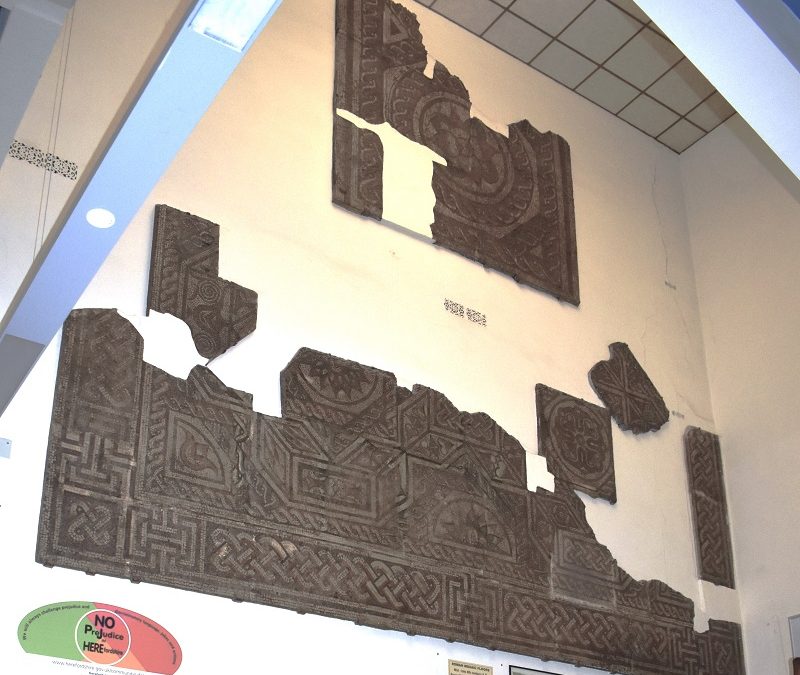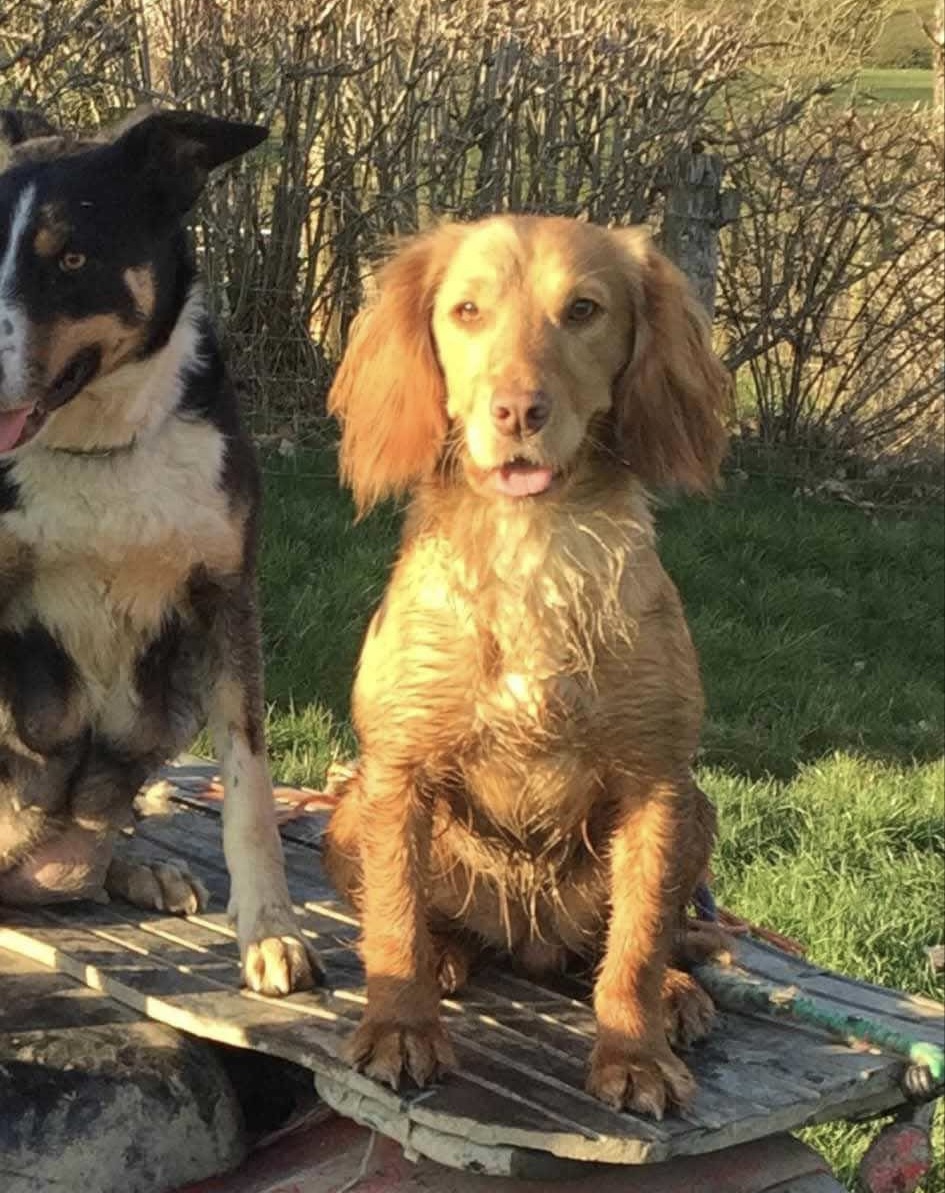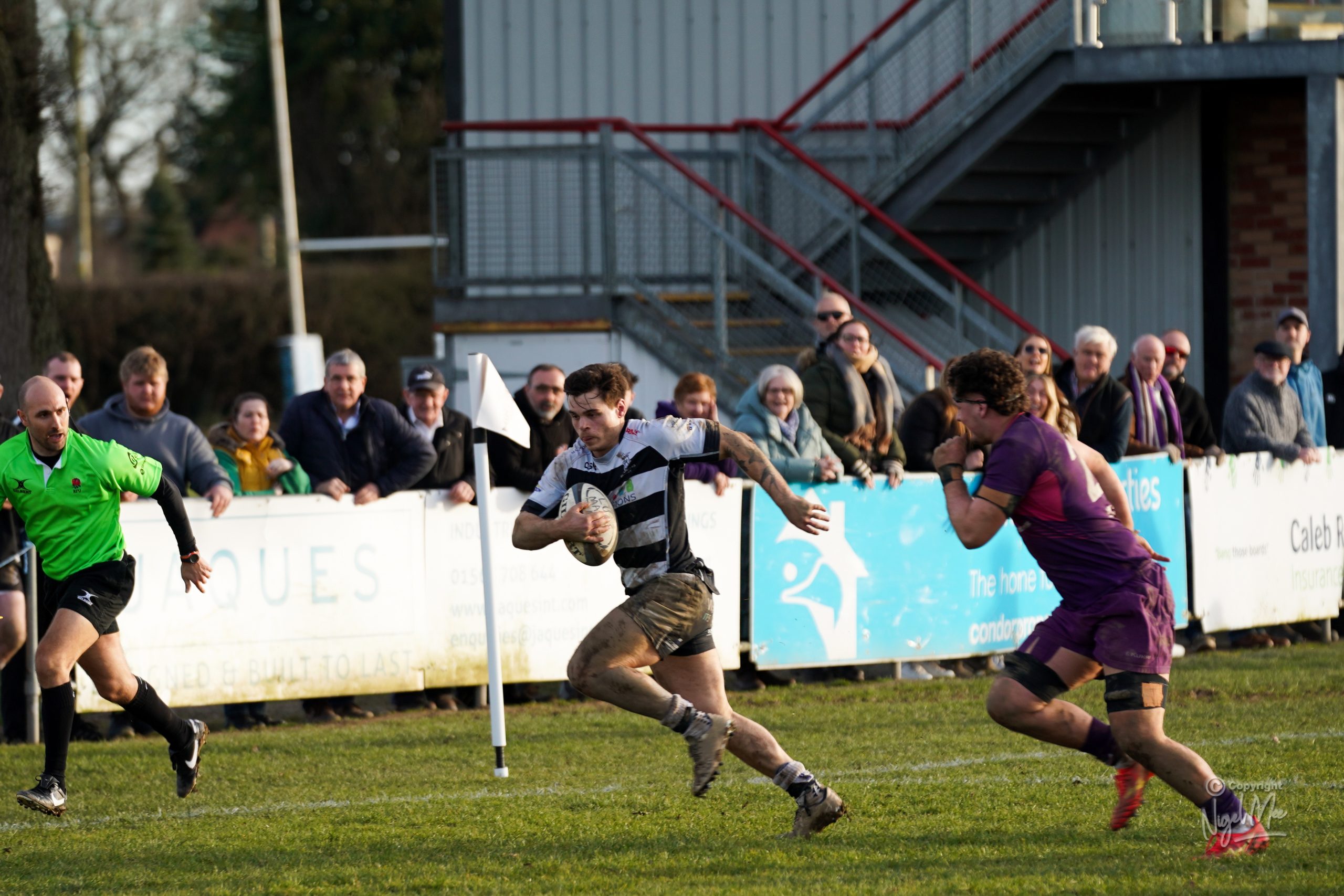Your chance to see behind the scenes as specialist team remove Roman mosaics before work starts on museum redevelopment
Every visitor to Hereford museum and art gallery during the past 100 years will have been impressed as they passed by the large wall-mounted Roman mosaics in the stairwell.
The Broad Street building is currently closed while preparations are made for the redevelopment of the museum. However, we’re inviting the public back into the building one final time to see the mosaics being removed before the museum transformation begins.
You can join us as we bid farewell to the mosaics on Wednesday 16 and Thursday 17 August, 10am – 3pm.
The mosaics, which are among the final objects to be removed, are made from small stone and tile cubes arranged into intricate spiral, interlocking border and flower patterns. They were originally laid on the floor in a wealthy home in Kentchester, and have been a wall-mounted display at Hereford museum for almost a century.
The mosaic removal has been painstakingly planned over the last seven months. The operation will be carried out by a team of specialists from Skillington Workshop Ltd. Skillington’s are one of the UK’s leading building conservation, repair and restoration companies. The public are invited to take a behind-the-scenes look at the Skillington’s team at work and speak to museum staff and volunteers.
The museum redevelopment is funded by Stronger Towns Fund, National Lottery Heritage Fund and Herefordshire Council. For further updates on the redevelopment please follow Herefordshire Museum Service’s social media channels and on the History lives herepages on the Herefordshire Council website: www.herefordshire.gov.uk/history-lives
Kenchester mosaic pavement
Accession number: 249
Date: 350 – 380AD
Period: Roman
The mosaic probably formed the floor of the main dining room, the triclinium, used for entertaining in a wealthy home in the town of Magnis at Kenchester. It was one of two complete mosaics found during excavations there in 1912-13. It is a high quality piece. It originally measured twenty-five feet square.
The pattern is complicated, showing spirals, guilloches, interlocking borders and flowers. The tesserae are made from cubes of stone or tile, and are of a small size which demonstrates a high quality of craftsmanship. It belongs to the Corinian-Saltire group of mosaics which is a regional style with examples in Gloucester, Droitwich and Cirencester. A similar mosaic was also discovered under the Excise Office in London in the mid-19th century. The mosaic from Magnis probably dates to 350-380 AD. It was fixed to the wall of the museum in 1927 with the help of public subscription.
Kenchester
Kenchester lies 5 miles North West of Hereford, it was the site of the small Roman town of Magna or Magnis. The town was shaped as an irregular hexagon, with a single main street. Two Roman roads met beside the town and one leads on to important Roman centres in Wales. The town defences were improved from around 2nd century until the 4th century.
Excavations have shown that occupation of the town continued into the 5th century and this research has concentrated on the defences, streets and houses. There were ‘military’ finds indicating that a possible 1st to 2nd century camp or fort was present within the town and there have been reports of a bath house as well as industrial activity and human cremations. The site was excavated in 1912-13, 1924-25, 1956-62 and 1977-79.
Hereford Museum and Art Gallery
Hereford Museum and Art Gallery is the country museum for Herefordshire. It opened in 1874 in spectacular purpose built Victorian Gothic library and museum building. Today, the Grade II* listed building is showing its age and is getting ready to undergo an £18millon redevelopment.
Once redeveloped the museum and art gallery will offer a gateway into Herefordshire’s unique heritage offer; a cultural beacon at the very heart of the city. It will provide opportunities for local people and visitors to engage with our region’s remarkable story in new and exciting ways. It will host an ambitious, imaginative and vibrant programme, acting as a catalyst for long-awaited cultural growth in the county.
Hereford Museum and Art Gallery Development
The £18 million redevelopment of Hereford Museum and Art Gallery is the flagship project for Stronger Hereford and the Town’s Investment Plan. The project will allow the county to fulfil its ambition of creating a dynamic social space at the heart of the city, a place where people can engage with heritage activities in fun, unexpected and exciting ways. It will create an offer that will be talked about far and wide, inspiring new opportunities and partnerships and becoming an attraction that local people are proud to say is theirs.
The redevelopment includes eight new galleries and display spaces, a temporary exhibition space, the restoration of the historic Woolhope Club Room and new commercial areas including a retail space, a roof-top café and events and education space. A spectacular viewing beacon and roof terrace will be accessible from the fifth floor courtyard space providing incredible 360 degree views over the city and surrounding Herefordshire landscape.
It is the first museum EnerPHit project in the UK and the most ambitious heritage retrofit EnerPHit project of this scale. It is a flagship architectural project for environmental design, and meets Herefordshire Council’s 2030 carbon neutral agenda.
This project champions environmental approaches, drawing on the latest sustainable technologies and design, and looking at innovative ways to discuss our impact on the world around us today.
Live science from the Woolhope Club will feed into gallery displays, visitors can interrogate the inner workings of the building, and take part in environmental events and activities. The pinnacle will be the roof garden and bee hive installation on the top of the building tended by community volunteers.
The project is funded by £5 million from the Stronger Towns Fund, £8 million from Herefordshire Council and £5 million from the National Lottery Heritage Fund.




